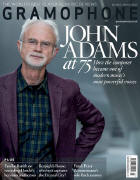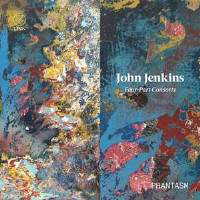Texte paru dans: / Appeared in: |
|
|
Outil de traduction |
|
|
Reviewer: Charlotte Gardner Fun fact: the viol consort music of the 16th and 17th centuries was so polyphonically complex and so democratic in its distribution of difficulty across all parts that assembling a group of players who were all of the requisite level of musical accomplishment often meant mixing social strata to a degree that would have been unthinkable in any other area of society, as professionals, gentleman amateurs, tradespeople, servants and educated ladies teamed up. Some were more enthusiastic than others about this, lutenist Thomas Mace (1612/13-?1706) describing with distaste a Cambridge music meeting at which ‘persons of quality’ were sometimes ‘crowded up, squeezed and sweated among people of an inferior rank’. It’s no doubt equally because of the scarcity of adequate players that the viol consort music of John Jenkins (1592-1678) has come down to us not via published music – despite his fame meaning that he published several books of more inconsequential pieces – but instead by way of manuscript copies, of which around 37 contain his four-part works composed in the 1620s, which themselves amount to 17 fantasias and two pavans. On to Phantasm, and this album marks the culmination of a longstanding project to record all of Jenkins’s music for four to six viols. The immediate distinguishing factor between it and its predecessors, and the Jenkins Four-Part Consorts released in 2018 by Fretwork, is the presence of organ continuo, something that in historically informed performancepractice terms is spot on but which nowadays presents more of a dilemma. On the one hand, slipping in organ continuo was both standard and desired in Jenkins and Maces’s day, for keeping everyone together and in tune while bringing attractive additional colour; and it must have been especially welcome with Jenkins’s particular brand of polyphony, which stands out for its continuous, mellifluous forwards flow over which the musical argument develops almost imperceptibly rather than via clearly defined sections. On the other hand, though, his four-part consorts don’t feature a separate organ part – it would literally have been supporting glue, playing the same notes as the viols. Plus, the character of a historical organ’s pipes inevitably impacts upon the degree of subtlety the viols can then achieve. Phantasm hardly need someone keeping them in time and tune … The compromise therefore has been to play just over half the set with sensitive organ shadowing from Daniel Hyde – the programme’s outer ends – and a central selection without. They’ve also reordered the set, grouping like keys together, including centring the first organaccompanied section entirely around the tonality of D. All this in turn brings a fabulously smooth yet profound shift in affect when the ringing D major organ chord ending Fantasy No 13 in D finally dies out, and the first Pavan starts up with its dark D minor sobriety and newly puritan strings-only texture. The other pleasure is the gentle sophistication of the playing, lines and argument imbued with taut alertness and a panoply of different colours and shading. Jenkins was especially sensitive to the affects of different keys and, as alluded to above, Phantasm have realised each separate emotional world impeccably, whether from fantasy to fantasy or when a new affect rolls in mid-piece: for instance, when Fantasy No 15 in C suddenly slides from serene steady flow to a playful dance, at which point their lively conversation is a joy. Surely both Jenkins and Mace would have approved. |
|




